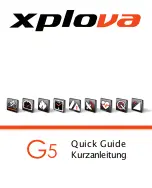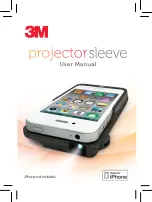
Installation
18
SS-SVX004C-EN
Important:
An adequate heat load must be supplied to
ensure a proper charge.
3. Disconnect the refrigerant cylinder from the discharge
side of the compressor and connect it to the suction
side.
4. Referring to
“Step by Step Start-Up Instructions,”
p. 21
, start the A/C system and use the system
controller to lower the room temperature setpoint 3–
5°F below actual room temperature thus ensuring the
compressor remains on as the unit is charged.
When fine tuning the charge during low ambient
conditions it will be necessary to restrict the airflow across
the condensing unit coil to raise the pressure. The fan
closest to the header must be running. When fine tuning
the charge, ensure the pressures are correct for the type of
refrigerant used. Refer to the tables in
for the operating temperatures and
pressures for the type of refrigerant used in the system.
5. Partially block the intake air to the condensing unit
until a constant discharge pressure can be obtained.
a. R407C Refrigerant- Allow the discharge pressure to
rise to 260–315 psig and hold it constant.
6. Slowly meter liquid refrigerant through the suction
side while watching the pressure gauges and
monitoring superheat and sub-cooling temperatures.
NOTICE
Compress Damage!
Failure to follow instructions below could result in
compressor failure and/or reduced compressor life. To
prevent compressor liquid slugging, only add liquid in
the suction line when the compressor is running. Use
extreme caution to meter liquid refrigerant into the
suction line slowly. If liquid is added too rapidly,
compressor oil dilution and oil pumpout could occur.
7. Take a superheat temperature reading near the feeler
bulb from the thermostatic expansion valve with the
temperature measuring device being well insulated.
The ideal superheat temperature is 10–15°F. Maximum
allowable superheat temperature is 20°F.
8. While monitoring the pressure, take a sub-cooling
temperature reading on the output side of the
condensing unit. The sub-cooling temperature should
be 5–20°F.
9. If necessary, (slowly) add liquid refrigerant to the
suction side to achieve the sub-cooling temperature.
10. If the unit has hot gas reheat (optional), the previous
steps are still followed except the hot gas reheat valve
must be open to allow refrigerant to flow into the
reheat coil to obtain the proper amount of refrigerant
charge. This can be done by using the system
controller to enable a call for dehumidification (lower
the humidity setpoint). This process may need to be
repeated several times. After cycling the system
through the hot gas reheat cycle, recheck the
superheat and sub-cooling temperatures with the
system only in the cooling mode.
Important:
Remove the blockage to the air intake of the
condenser.
11. Fill out the applicable sections of Warranty
Registration and Start-Up Checklist.
-30 °F Flooded Head Pressure Control
For units utilizing flooded head pressure control, a
receiver is used to store the refrigerant during the time the
condensing unit is not utilizing the extra refrigerant
charge.
1. For -30 systems, additional refrigerant is required so
that there is an adequate amount of refrigerant to
effectively flood the condensing unit coil during low
ambient operation. When estimating the amount of
refrigerant required be sure to use the Flooded HP
Control charge weight in
Table 6, p. 17
. When breaking
the vacuum with the initial refrigerant charge, it is
desirable to install as much of the estimated charge as
possible with the compressor remaining off. To
accomplish this, introduce liquid refrigerant directly
into the service port of the receiver (see
Figure 8
) and
then liquid refrigerant into the discharge line service
port. (Do not introduce more refrigerant than the total
estimated system charge).
Note:
It is important not to exceed 80% of the total
condensing unit and receiver volume to allow
room for expansion.
2. Give the unit a call for cooling to turn on the
compressor. With the compressor running, any
remaining amount of the estimated charge can be
introduced into the suction port of the compressor.
3. A refrigerant level sight glass may be located on the
side of the receiver to assist the service technician in
charging the air conditioning system. The proper
charge can be fine tuned/verified by viewing the level
of refrigerant in the receiver while the unit is running at
an elevated discharge pressure.
4. Block off the air intake to the condensing unit and allow
the discharge pressure to rise to 445 psig (410A) or 325
psig (407C) and hold it constant for a minimum of 10
minutes.
5. When the unit is properly charged, the receiver sight
glass will show half full of liquid while running at the
elevated discharge pressure.
6. Verify superheat and sub-cooling temperatures are
within operating parameters.
Important:
Remove the blockage to the air intake of the
condenser.
7. Fill out the applicable sections of the Warranty
Registration and Start-Up Checklist.















































